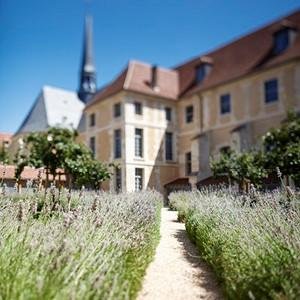Residents are ready to fight the proposals
WATCH OUR HISTORY CHANNEL’UNTOLD LONDON’ ON YOUTUBE
HERITAGE experts are set to fight a development project that could wreck a historic 20th-century block.
The 1930s built Art Deco Hylda Court near Parliament Hill Fields is at the centre of a development plan lodged by its owners that would see new luxury flats built on its roof. Three new “town houses” would replace a set of garages and a caretakers lodge.
But, calling the move a “money-making project”, tenants have lined up to object. They have been joined by the 20th Century Society who have called on the owners, the Pears Group, to withdraw their plans and instead help Historic England to list the building.

The 20th Century Society is now calling for protection for Hylda Court
Architectural historians from the conservation group say they believe it worthy of added protection.
A 20th Century Society spokesman said: “We welcome the fact that the building has been put forward for listing and we look forward to being consulted by Historic England on this.”
Tenants said they did not feel they had been consulted before plans were recently lodged with the Town Hall’s planning department. Instead, they discovered when a neighbour pushed leaflets through their doors, having spotted a small notice on a nearby lamp post.
Tenants affected could include older people, people with long-term health issues and home workers.

The original marketing for Hylda Court near Parliament Hill Fields and, below, how it looks today

If the work gets the green light, resident Anna Kusner’s house will be demolished. The owners have declined to answer whether she will be given the right to return.
Ms Kusner, who founded and manages the Castlehaven Food Bank and is a life guard at the Ladies Pond, has lived in the flat for more than 10 years. She said: “I’m completely distraught. I have not had any communications at all and I will fight this all the way. They call my house a caretaker’s flat but it hasn’t been used for a caretaker for years. They say where I live is unused and that the garages are defunct – that is just not true.”
She said the proposals would lead to a large increase in buildings and overlook La Sainte Union school. One family told the New Journal they felt they had been “hoodwinked” by the plans.
Anina Maeder is pregnant with her first child and moved in with her partner earlier this month. She said she was not told that it could soon be a building site.
She said: “When we signed our lease, it was clear – and we couldn’t have made it more clear – that I was pregnant. “If we had been told the block was subject to a project like this, we would not have moved in. The works could coincide exactly with my labour and then maternity leave. It is very far from ideal.”
Owners the Pears Group declined to comment. A spokesman for their managing agents said they did not feel it “appropriate to respond” while the application is live. In its planning documents, the owners claim the garages are unused, and add the roof extension will be a “modern take on the “Art-Deco design”.
The application says it will make the most of a brownfield site.
But neighbour Katherine Johnson highlighted the architectural significance of Hylda Court.
She said: “The proposed roof extension, despite attempts to mimic the existing architecture, fails to respect the integrity and aesthetic of the original building. “The addition of a new floor, even with a set-back design, will disrupt the visual harmony and architectural coherence.”
The history behind the Hylda in Hylda Court
SINGER Hylda May King-Hall was a soprano, who sang for the D’Oyly Carte opera company which worked with Gilbert and Sullivan.
She lived nearby in Dartmouth Park Road. Hylda enjoyed much stage success in musical comedies.
1915 she married Ernest King Hall at Islington Town Hall and the pair settled in St Albans Road in a home called The Hollies.
In the mid 1930s, as the trend for apartment living took hold, the couple employed architect Clifford Culpin to build Hylda Court.
Later he would become the Royal Institute of British Architects’ vice president, while his work in the 30s and onwards has been lauded as classic British Modernism. His buildings include the listed Poplar and Greenwich town halls.
Once Hylda Court was completed in 1936, adverts in The Times boasted of various mod-cons including a 24-hour uniformed portering service, available for the price of £140 per year.




